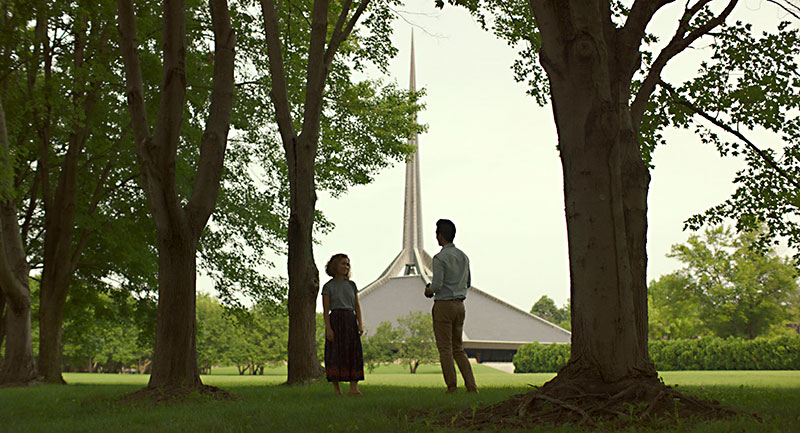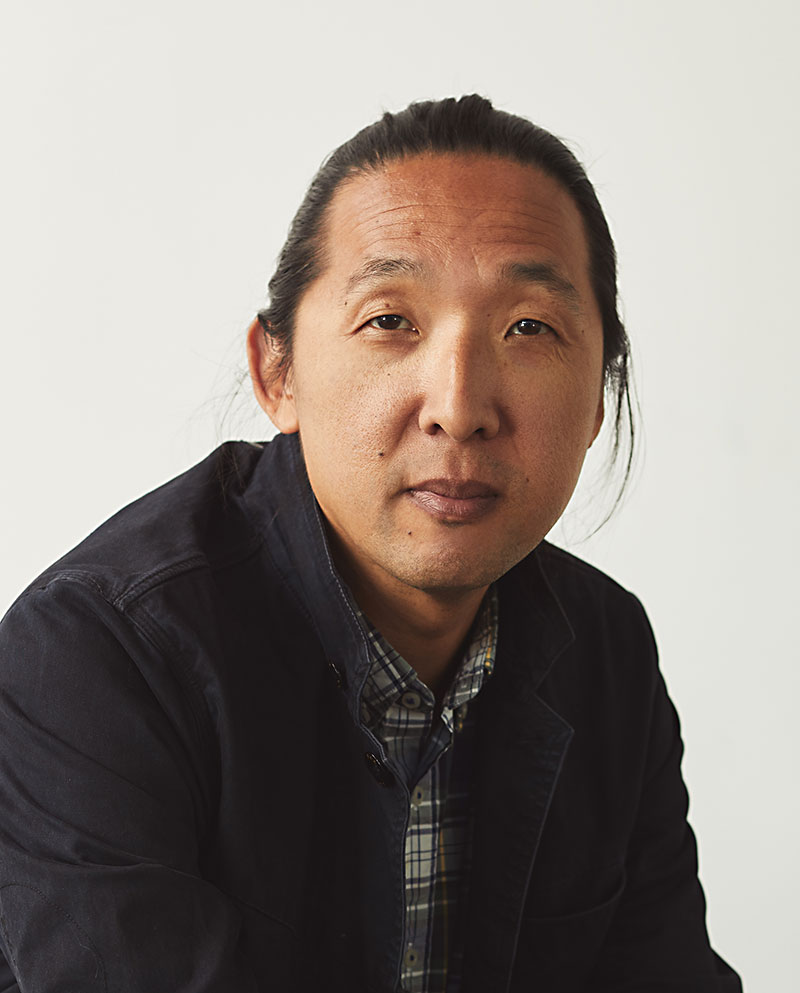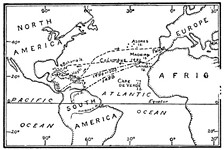The Sublime Beauty of Kogonada's Columbus
Director brings his indie drama to AFS Cinema
By Kahron Spearman, Fri., Aug. 25, 2017
The frosted maturity, both in style and tangible coolness, of Columbus represents something of a graduation for famed cinephile and film essayist Kogonada. The John Cho and Haley Lu Richardson film explores aspects of humanity through emotional juxtapositions with architecture and space as a primary device, and through the director's studious and reverential approach.
Ultimately, Kogonada eschews cinematic wheel re-creation, instead electing to establish profound truths found in his study, and of more comprehensive depictions of Asian men.
The secretive director initially came to the fore with a series of excellent cut collages, commissioned by Sight & Sound, the British Film Institute, and the Criterion Collection, including "What Is Neorealism?" which examined neorealistic spacing and focus on environment. His portfolio includes "Mirrors of [Ingmar] Bergman," a look at the Swedish director's interplay of reflection and self-perception, and also "Sounds of [Darren] Aronofsky," a surprising audiovisual soufflé.
A mixing of Zach Braff's Garden State through director Yasujiro Ozu's stark and undeviating lens, Columbus counts as a natural continuation of Kogonada's tireless film study, but also a public opportunity to capably upend exceedingly tired two-dimensional tropes regularly assigned to East Asian men, especially in American film.
"What I wanted was an Asian man who reflected a lot of the Asian men I know, who are struggling with what it means, not necessarily what it means to be Asian, but what it means to be human," explains the director.
"What it means to be a son, what it means to struggle with life and what you want to do. There aren't a lot of these representations."
Cho (of Harold & Kumar and Star Trek fame) plays Jin, an angsty translator who arrives in Columbus, Ind., from Seoul, to tend to his Korean scholar father who's suffered a massive stroke. He eventually meets the mercurial Casey (Richardson, recently seen in Shyamalan's Split), who's suffering from her own bouts of existential crises, born out of constant worry for her recovering meth addict mother.
Her mother's addiction works as a knotty yet clever class reference, up against inherently highbrow qualities of the town's unusually dense collection of modernist architecture, by the likes of architects Harry Weese (First Baptist Church) and the heavily featured neo-futurist Eero Saarinen (Miller House, First Christian Church, and the Irwin Conference Center). Undertones are not lost on Kogonada – this is the town that birthed Vice President Mike Pence.
In their walks around town, taking in and talking about the architecture, worldly Jin finds himself intrigued by Casey's mental acuity, but questions the fearful governor she has attached to her future. There's tension between other people for each of these characters. Library co-worker and doctoral student Gabriel (Rory Culkin) vacillates in his affection for Casey. Jin's tension with his father's colleague Eleanor (Parker Posey) is palpable.
All the film's characters are nuanced, extremely well-executed, and finish redeemable; however, it is a cinematic triangle – Cho's Jin, Kogonada's use of symmetry, and the film's tremendous detail in sound – that put the film over.
Cho fills Jin into a three-dimensional character, stripped of the typical Asian stereotyping. The director refuses to flatten out Jin's worldly otherness for our consumption, to utilize some racial secularity. Belief in what an Asian has to perceive himself as for acceptance is chopped down and rebuilt for the viewer.
"I didn't even want him to have an accent, even though he was coming from Seoul," Kogonada emphasizes. "It was important to me that he was going to be an 'international' person, someone who came from America, probably lived in Europe. I had a backstory where he went to Cambridge.
"I wanted someone who was a person of the world, that also happened to be Asian."
Cho's portrayal provides a Weltschmerz quality, oscillating between confident and confused, angry and melancholic over his inability to capture his father's affirmation, though he has no plans to sit at his father's bedside. It is actually faithful Casey that is the dutiful daughter, refusing to leave her vulnerable mother.
There's an ongoing tango with the film's characters and the buildings, where at times Kogonada flips positions of the buildings or interior designs as accents to the people, or he dissects frames into halves or thirds by the characters. There's a particular scene where he expertly positions Jin and Eleanor, flattened out through mirrors reflecting a layered depth in lighting, conversation, and physicality.
"The relationship between the human being and these significant structures was going to be the dance of the film," he says. "We know that, if the film works, it is because of the people adding the right soul to this 'modernness' and that they have provided warmth and humanity onto the coldness of a modern building.
"We see that these buildings can and do speak to us, and that there can be a relationship."
Lastly, the sound of the film, the acoustic spacing and pregnant silences, provide the film's fullness. There are multiple scenes, particularly in the third act, where tough decisions are being made, and immediate reactions are logged, and the soundtrack enriches each scene. Texture and context are created through the consistent lingering, holding on to sound or a body, as found in classic neorealism.
"We talked quite a bit with the composers, musicians, sound designers, and actors, about those sorts of empty moments, that they are indeed full, tangible, and pregnant," he says. "If you give it the right care, [the sound] doesn't feel extraneous. It feels significant.
"We had a script where they were free to time [silences] the way they wanted. It was very much the actors feeling out the moment, and us valuing when the silence occurred."
He understands that not everyone is going to understand the space.
"I know people will react differently to it, that some people won't be patient with it, or feel in tune. But it was certainly important to us."
Columbus opens Thursday, Aug. 24, at AFS Cinema. Kogonada will be in attendance for the Saturday, Aug. 26, 7pm screening, as well as take part in “Kogonada: The Art of the Video Essay,” a program of his shorts followed by a Q&A, 4:30pm. See www.austinfilm.org for more info and see Film Listings for showtimes and review.











